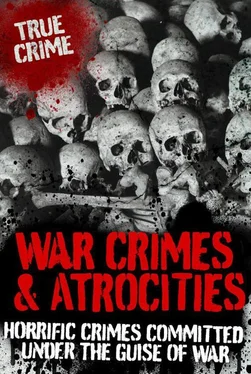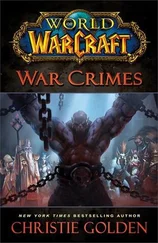GRAVEYARD GHOULS
One of the most disturbing aspects of the pogrom, besides the loss of life and the destruction of property, was the sick way that the Nazis and their civilian sympathizers desecrated the synagogues and cemeteries belonging to the Jews. Graves were raided, tombstones smashed and bonfires lit in the graveyards, onto which were thrown prayer books, scrolls, statues, paintings and other religious artefacts. Even the smallest synagogues in little rural villages were razed to the ground, both in Germany and Austria. Not only this, but the Jews themselves were often forced to clear up the damage, being taunted by erstwhile friends and neighbours as they did so.
Not surprisingly, the events of Kristellnacht prompted outcry from abroad. In London newspapers, there were reports of the anti-Semitic violence on the streets, as well as an account of what had happened to interned Jews at Sachsenhausen, where 62 Jewish men had been beaten so badly by police that 12 of them died.
HOUNDED INTO EXTINCTION
However, despite public opinion abroad and the diplomatic repercussions for the German government, the Nazi leaders were determined to continue with their policy of persecuting the Jews. In fact, Kristellnacht seemed to mark a turning point: the Nazis’ violent anti-Semitism was now out in the open, and, moreover, had ignited a deep vein of anti-Jewish feeling within the German population. Hitler’s right-hand man, Hermann Göring, called a meeting of top Nazi officials ‘to coordinate and solve the Jewish question once and for all, one way or another’. With these sinister words, the Nazis ushered in new phase of persecution, in which Jews were to be further hounded into extinction.
First, a collective fine of one billion marks was to be levied against the Jews for the murder of vom Rath. The government also decided to avail itself of all the insurance money that should have gone to the Jewish owners of properties destroyed on Kristallnacht, as ‘damages’ due to the German nation.
MASS EMIGRATION
Realizing that life in Nazi Germany was going to be made impossible for them, many Jews left the country: in total, in the ten months after the events of Kristallnacht, over one million Jews emigrated. Many found homes in other European countries, such as France, only to find themselves victims of persecution there later on in the war. Others went to the USA and to Palestine, and even to China.
After Kristallnacht, many European nations condemned the Nazi government. However, what was significant to the leaders of the Third Reich was that no one country actually came forward to oppose what was going on in Germany. After the events of World War I, none of the European nations was keen to involve its civilians in another horrific world war. Thus, Hitler and his henchmen were allowed to continue with their campaign of terror. They became aware that they could get away with whatever they wanted to, safe in the knowledge that neither Europe, nor the USA, would intervene.
Thus, Kristallnacht had a dual significance: signalling to the citizens of Germany that they could indulge their racist sentiments without fear of punishment from the government, indeed with encouragement from the authorities; and signalling to the rest of Europe that the Nazis were now in total control, and that Germany could be left undisturbed to carry out its cruel, inhuman programme of persecution and slaughter of the Jewish people.
Some historians have argued that had Kristallnacht provoked stronger opposition in Europe, German anti-Semitisim might have been nipped in the bud and the Holocaust might never have happened. However, through a combination of fears about another world conflict, and possibly a measure of anti-Semitism as well, the European powers left Hitler to his task of committing the greatest crimes against humanity that the world has ever known.
1941–45

The mass genocide of European Jews by the Nazis in World War II is well known. However, today many people do not know that, in the Balkans, fascist elements in Croatia and elsewhere persecuted and killed over one million Serbs, either interning them in concentration camps, where most met their deaths, or torturing and murdering them in their own villages and towns in the most unspeakably brutal way. This persecution had its roots in a long enmity between the different ethnic and national groups, and after the war, the wholesale slaughter of the Serbs was to have many repercussions, resulting in renewed conflict in 1991 in Bosnia.
SADISTIC BRUTALITY
The main perpetrators of the atrocities in Yugoslavia were the Croatian Ustase army, which was a militia created by the pro-fascist government under Prime Minister Ante Pavelic. One of the first massacres they committed was on 28 April, 1941, when Ustasa troops appeared at the villages of Brezovica and Gudovac. The soldiers rounded up the villagers, singled out those of Serbian nationality, and ordered them either to convert to Roman Catholicism or to go back to their native land. During the raid, they killed 234 Serbs. Next, 520 villagers, including women and children, were attacked at Blagaj. They were beaten about the head until they died in a frenzy of violence that shocked even the most hardened inhabitants.
The violence continued at various areas around Livno, where over 3,000 Serbs were killed. At the Koprivnica Forest and the Risoveda Greda Forest, soldiers went on a rampage, hacking the bodies of women and children to pieces and throwing the bodies into ravines. Tales were told of terrible sadism, such as children being decapitated and their heads thrown at their mothers. Another instance of dreadful brutality occurred on 10 July at the small town of Glina, where 700 Serbs had gathered at a church to renounce their faith and convert to Catholicism. Instead, the Ustase attacked them, beating them to death with mallets, clubs and rifle butts, or stabbing them with bayonets. After this frenzied attack, members of the congregation were left to die, and the church was torched to the ground.
MASS MURDER OF CHILDREN
All this went on as the Nazis took control of the country. As far as the Nazis were concerned, as long as the Croatian militia carried out their orders to round up and intern Jews from the region, the troops were at liberty to persecute whoever else they pleased. Thus, as well as rounding up Jewish and Roma people, the Ustase interned many Serbs. In one of the worst war crimes to take place in Yugoslavia, over 6,000 children were separated from their parents and taken to a camp at Sisak. There, they lived in squalid conditions without enough to eat or drink, until around 1,600 of them died. A similar scene took place at the concentration camp of Jastrebarko, where over 3,000 children met with the same type of neglect, and hundreds of them dying in the process.
At the end of the war, the horrifying statistics on the carnage were revealed. It is estimated that in total, 11,176 Serbian children die between 1941 and 1942. Of these, the majority were boys. Tragically, the average age of the children was six-and-a-half years old.
THE ARCHITECT OF GENOCIDE
The architect of the Serbian massacres was Ante Pavelic, the leader of the Croatian National Socialist Ustase movement, who became head of the so-called Independent State of Croatia when the Nazis invaded the Balkans during World War II. Far from being an independent state, as its name suggested, Croatia in fact became a puppet state of the Third Reich, and it set about supporting the Germans in their persecution and murder of the Jews and Roma people. In addition, the Croatian Ustase pursued their own agenda, which was to rid the country of the Serbian nationals living there, without opposition from the German government.
Читать дальше













